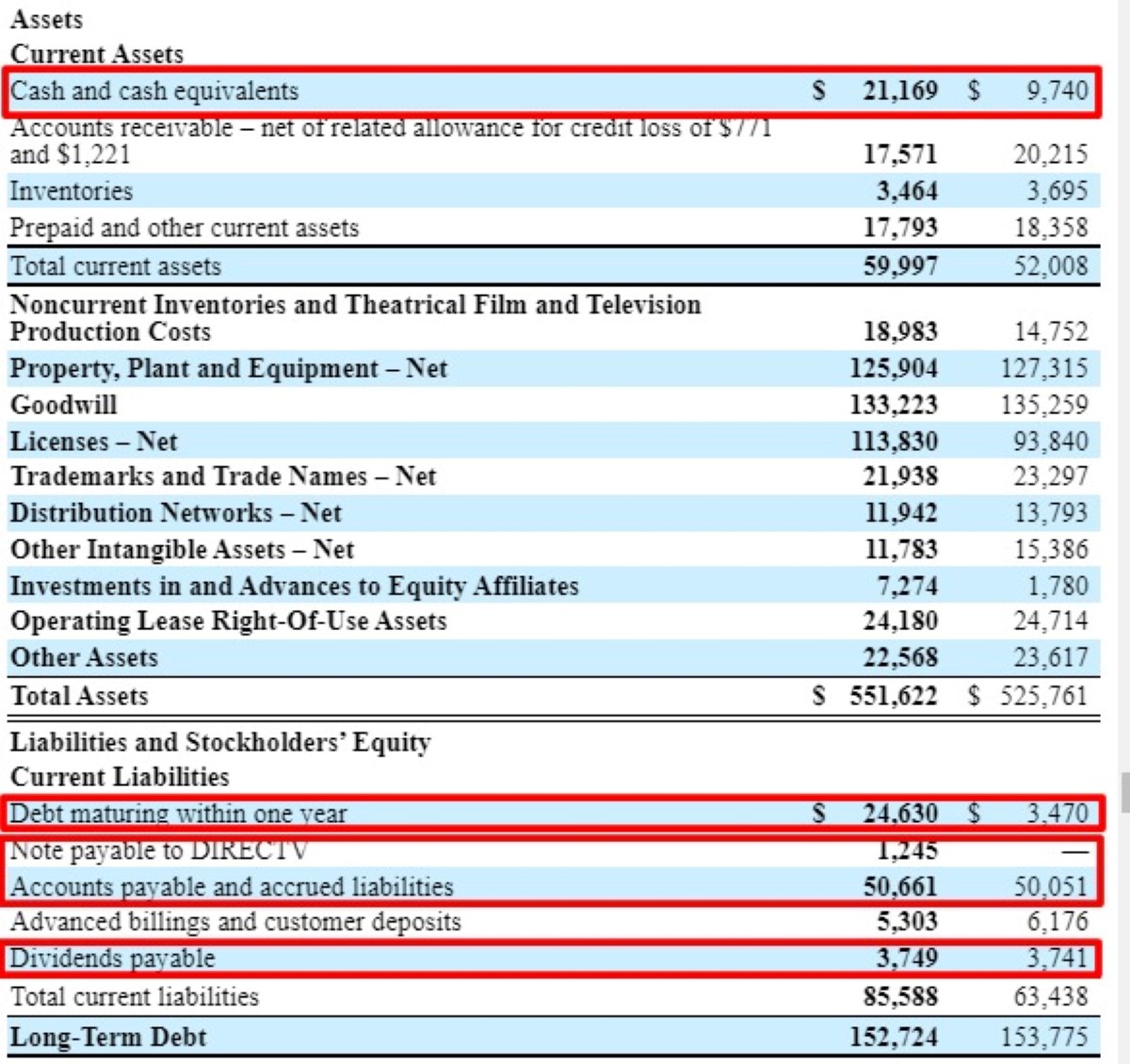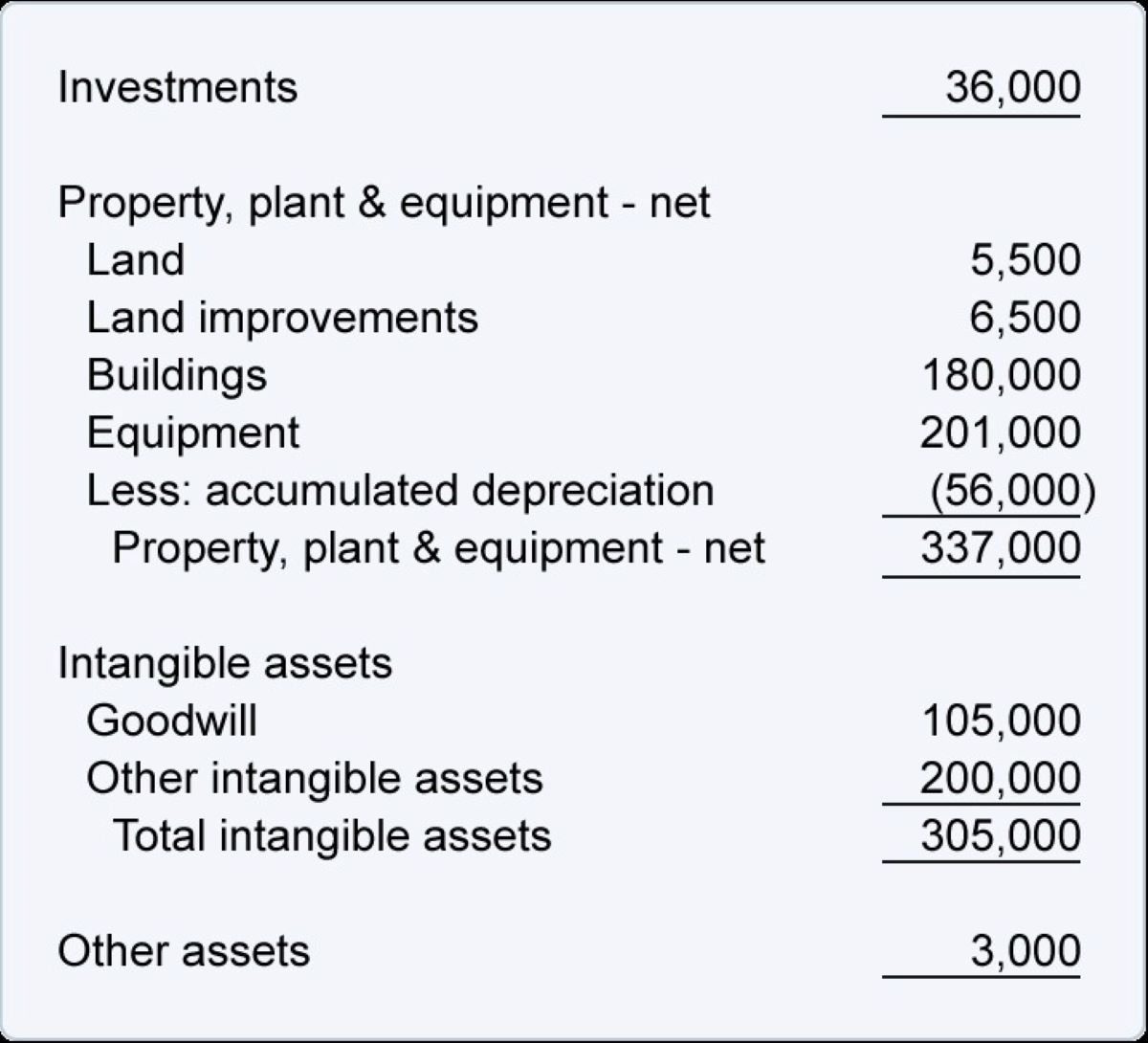

Finance
What Is A Term Sheet In Venture Capital
Published: January 21, 2024
Learn what a term sheet is in venture capital and how it impacts the finance industry. Gain insight into the key elements and negotiation process.
(Many of the links in this article redirect to a specific reviewed product. Your purchase of these products through affiliate links helps to generate commission for LiveWell, at no extra cost. Learn more)
Table of Contents
Introduction
In the world of venture capital, the term sheet plays a crucial role in defining the terms and conditions of an investment deal. It serves as a roadmap for both the investors and the startup founders, outlining the key provisions and terms that will govern the investment. Understanding the intricacies of a term sheet is essential for any entrepreneur or investor navigating the complex waters of venture capital.
A term sheet is a non-binding document that outlines the proposed terms and conditions of a potential investment. It is often the first step in the negotiation process between the investors and the startup founders. While not legally binding, the term sheet sets the framework for the final investment agreement.
The primary purpose of a term sheet is to establish the key terms and provisions of the investment deal. It serves as a foundation for both parties to discuss and negotiate the finer details before proceeding to a formal agreement. By clarifying the main points of the investment, the term sheet helps streamline the negotiation process and avoids any misunderstandings or conflicts in the future.
Term sheets can vary in length and complexity, depending on the nature of the investment and the preferences of the parties involved. However, they typically cover key areas such as valuation, investment amount, ownership stake, rights and preferences, governance, and exit strategies.
In the following sections, we will delve deeper into the different components of a term sheet and their significance. We will also explore the negotiation and due diligence process, the benefits and risks of using a term sheet, and provide examples of term sheets in venture capital deals.
Definition of a Term Sheet
A term sheet is a concise document that outlines the proposed terms and conditions of a potential investment deal between investors and startup founders. It serves as a preliminary agreement that sets the framework for further negotiations and the eventual drafting of a formal investment agreement.
Unlike a legally binding contract, a term sheet is generally considered non-binding, meaning that it does not hold either party to strict obligations. Instead, it provides a starting point for discussions and serves as a guide for the eventual agreement.
A term sheet typically includes various sections that cover important aspects of the investment, such as the investment amount, valuation, ownership percentage, governance rights, liquidation preferences, anti-dilution provisions, and more.
While a term sheet is non-binding, it is still a crucial document in the investment process. It allows both parties to establish a common understanding of the proposed terms, reducing the likelihood of misunderstandings or disputes during the negotiation stage.
The term sheet serves as a roadmap for negotiations and helps streamline the process by highlighting the key points that need to be addressed. It enables investors and startup founders to focus on the essential elements of the deal, such as the investment amount, equity distribution, control provisions, and other key terms.
Furthermore, the term sheet acts as a reference point for conducting due diligence. It provides a clear overview of the agreed-upon terms, allowing both parties to assess the feasibility and alignment of their goals before proceeding with a more detailed examination of the startup’s financials, legal documentation, and other relevant information.
It is important to note that while a term sheet is non-binding, certain provisions within it might carry more weight and be subject to stricter enforcement in the eventual investment agreement. Therefore, parties should approach the negotiation and creation of the term sheet with careful consideration and consult legal and financial advisors to ensure their interests are adequately represented.
Overall, a term sheet is a vital document in the venture capital landscape. It serves as a foundation for negotiations, aligns expectations between investors and startup founders, and ultimately helps facilitate the creation of a legally binding investment agreement.
Purpose of a Term Sheet
The purpose of a term sheet in venture capital deals is to outline the key terms and provisions of a potential investment agreement. It serves as a guidepost to facilitate negotiations and align the expectations of both parties involved, namely the investors and the startup founders.
One of the primary purposes of a term sheet is to establish a common understanding between investors and startup founders regarding the main terms of the investment. By clearly defining the investment amount, valuation, ownership stake, and other fundamental aspects, the term sheet ensures that all parties are on the same page before proceeding with further due diligence and formalizing the agreement.
Another purpose of a term sheet is to streamline the negotiation process. While negotiation is an inherent part of any investment deal, having a term sheet helps prioritize discussions and focus on the key terms and provisions that require agreement. This can save both time and effort by avoiding unnecessary back-and-forth on less critical aspects of the investment.
The term sheet also acts as a protective measure for both investors and startup founders. It provides an opportunity for both parties to identify and clarify any potential areas of disagreement or concern early in the process. By addressing these issues upfront and finding a mutually acceptable solution, the term sheet helps minimize the risk of disputes arising during the later stages of the investment.
Furthermore, a term sheet serves as a valuable tool for conducting due diligence. It allows both investors and startup founders to assess the feasibility and compatibility of the proposed investment arrangement. Prior to committing significant time and resources to extensive due diligence, the term sheet provides a high-level overview of the agreed-upon terms, enabling both parties to evaluate the potential fit and alignment of their goals.
Additionally, a well-drafted term sheet can serve as a reference point for documentation purposes. It can be used in the process of drafting the final investment agreement to ensure that all agreed-upon terms and provisions are accurately reflected in the binding contract.
Overall, the purpose of a term sheet is to facilitate the negotiation process, establish a common understanding of the investment terms, and minimize the risk of disputes or misunderstandings. It acts as a crucial document in the venture capital landscape, guiding investors and startup founders towards a mutually beneficial investment agreement.
Key Terms and Provisions in a Term Sheet
A term sheet in venture capital deals contains various key terms and provisions that define the structure and conditions of the investment. These terms and provisions form the basis for negotiation and serve as a guide for drafting the final investment agreement. While term sheets can vary in complexity and specifics, there are several common elements that are typically included:
- Valuation: This term specifies the pre-money valuation of the startup, which determines the ownership stake investors will receive in exchange for their investment. Valuation can be a contentious point during negotiations, and different methods, such as the discounted cash flow (DCF) or comparable company analysis, may be used to arrive at a fair valuation.
- Investment Amount: This is the total amount of capital that the investors commit to investing in the startup. It is often broken down into multiple tranches or rounds, with specific milestones or conditions attached to the release of funds.
- Ownership Stake: The ownership stake represents the percentage of equity that the investors will hold in the startup following the investment. It is typically calculated based on the valuation and the amount of investment.
- Governance Rights: Investors often seek certain governance rights to protect their interests and influence the decision-making process. These rights may include board seats, observer rights, voting rights, and veto power over specific actions or transactions.
- Liquidation Preference: This provision outlines the order in which investors will be repaid in the event of a liquidation or sale of the startup. It determines the priority of the return of funds and can include preferences such as participating, non-participating, or convertible.
- Anti-Dilution Provisions: These clauses protect investors from their ownership stake being diluted in subsequent financing rounds at lower valuations. There are different types of anti-dilution provisions, such as full ratchet and weighted average, which determine how the adjustment is calculated.
- Exit Strategy: The term sheet may include provisions related to the potential exit strategies for investors, such as initial public offerings (IPOs), acquisitions, or other liquidity events. It may outline the timeline and conditions under which investors can expect a return on their investment.
Other terms that may be included in a term sheet include rights of first refusal, drag-along rights, information rights, employment agreements, non-compete clauses, and dispute resolution mechanisms. The inclusion and specifics of these terms depend on the particularities of the investment and the preferences and negotiation power of the parties involved.
It is important for both investors and startup founders to carefully review and understand these key terms and provisions. Seeking advice from legal and financial professionals is crucial to ensure that the term sheet accurately reflects the intended agreement and protects the interests of all parties involved.
Negotiation and Due Diligence Process
The negotiation and due diligence process is a critical component of the term sheet and venture capital investment. It allows investors and startup founders to evaluate and validate the terms outlined in the term sheet before proceeding to a formal investment agreement.
The negotiation process typically begins after the initial presentation and discussion between the investors and the startup founders. The term sheet serves as a starting point for negotiations, providing a clear framework for both parties to discuss and agree upon the key terms and provisions of the investment.
During the negotiation process, both investors and startup founders have the opportunity to raise concerns, suggest modifications, and seek alignment on the terms outlined in the term sheet. This phase involves careful consideration and can sometimes involve multiple rounds of negotiations as both parties strive to reach a mutually acceptable agreement.
Throughout the negotiation process, it is important to maintain effective communication and transparency between all parties. The use of legal and financial advisors can be instrumental in providing guidance, ensuring that the interests of both investors and startup founders are adequately represented.
Once the negotiation phase is complete and both parties have reached a consensus on the terms, the due diligence process begins. Due diligence involves a thorough analysis and examination of the startup’s financials, legal documentation, operational processes, intellectual property, and other pertinent aspects.
During the due diligence process, investors and their legal and financial teams scrutinize every detail to assess the viability and risks associated with the investment. Similarly, startup founders may conduct their due diligence on the investors, investigating their credibility, track record, and potential value-add to their business.
Due diligence serves to verify the accuracy and validity of the information provided by the startup, as well as to identify any potential red flags or areas of concern. It is a critical step to ensure that both parties have a comprehensive understanding of the investment opportunity and can make informed decisions.
Throughout the negotiation and due diligence process, open and transparent communication is crucial. Clear and timely communication helps build trust and allows for the efficient resolution of any issues or concerns that may arise.
Once the due diligence process is satisfactorily completed, the finalized term sheet serves as the basis for drafting the final investment agreement. This legally binding agreement reflects the terms and provisions outlined in the term sheet, providing a solid foundation for the investment relationship between the investors and the startup founders.
Overall, the negotiation and due diligence process is a critical phase in venture capital deals. It ensures that both investors and startup founders have a comprehensive understanding of the investment opportunity and allows for mutually agreed-upon terms to be formalized in the final investment agreement.
Importance of Negotiating a Term Sheet in Venture Capital Deals
The negotiation of a term sheet is a crucial step in venture capital deals. It plays a significant role in establishing the foundation for a successful investment agreement between investors and startup founders. The importance of negotiating a term sheet is evident in several key aspects of the venture capital process:
1. Alignment of Expectations: Negotiating a term sheet allows both parties to align their expectations regarding the investment. It provides an opportunity to discuss and agree upon the key terms and provisions that will govern the relationship. By reaching a consensus on these important aspects, potential misunderstandings and conflicts can be minimized in the future.
2. Flexibility and Customization: The negotiation of a term sheet allows for customization of the investment agreement to fit the specific needs of both the investors and the startup founders. It provides flexibility to address unique circumstances or requirements that may arise during the negotiation process. This level of customization ensures that the investment agreement reflects the goals and objectives of both parties.
3. Investor Protection: The negotiation phase allows investors to protect their interests and mitigate risks. By negotiating for favorable terms such as liquidation preferences, anti-dilution provisions, and rights to participate in future funding rounds, investors can safeguard their investment and enhance their potential returns. Negotiating a term sheet empowers investors to establish appropriate control and protection mechanisms.
4. Entrepreneurial Protection: On the flip side, startup founders have an opportunity to negotiate terms that protect their rights and interests. This includes preserving a sufficient ownership stake, maintaining control over strategic decisions, and ensuring fair treatment in the event of an exit or liquidation. Negotiating a term sheet allows startup founders to structure the investment in a way that aligns with their long-term vision and goals.
5. Streamlining the Process: Negotiating a term sheet streamlines the overall investment process. By clearly defining and agreed-upon terms, the negotiation phase sets a framework for the due diligence process and subsequent drafting of the final investment agreement. This saves time and effort by prioritizing discussions and ensuring that all parties are aligned on the core terms before proceeding with the detailed examination of the investment opportunity.
6. Building Trust and Rapport: Negotiating a term sheet establishes a foundation of trust and rapport between investors and startup founders. Through open and transparent dialogue, both parties can gain a deeper understanding of each other’s needs and expectations. This trust and rapport form the basis for a strong long-term relationship, which is crucial for the success of the investment and potential future funding rounds.
7. Risk Mitigation: Negotiating a term sheet allows for a proactive assessment and mitigation of risks associated with the investment. Through careful negotiation and due diligence, potential areas of concern or ambiguity can be identified and addressed, reducing the likelihood of disputes or challenges down the line.
In summary, negotiating a term sheet is a critical step in venture capital deals. It aligns expectations, protects the interests of both parties, streamlines the investment process, builds trust, and mitigates risks. By engaging in a thoughtful negotiation process, investors and startup founders can establish a solid foundation for a successful investment partnership.
Benefits and Risks of Using a Term Sheet
Using a term sheet in venture capital deals offers several benefits for both investors and startup founders. However, it is important to be aware of the potential risks involved. Understanding the advantages and drawbacks of using a term sheet is crucial in navigating the negotiation and investment process effectively:
Benefits:
- Clarity and Focus: A term sheet provides clarity by outlining the key terms and provisions of the investment. It helps to focus the negotiation process on the most critical aspects, minimizing time and effort spent on non-essential points.
- Flexibility and Customization: Using a term sheet allows for customization of the investment agreement to suit the specific needs of both parties. It provides flexibility to address unique circumstances and negotiate terms that align with the goals and objectives of the investors and startup founders.
- Streamlining the Process: A term sheet streamlines the overall investment process by providing a roadmap and framework for discussions and due diligence. It helps both parties stay organized and prioritize their efforts during the negotiation and due diligence phases.
- Risk Mitigation: By clearly defining the terms and provisions of the investment, a term sheet can help mitigate potential risks and conflicts. It allows for the identification and resolution of issues before they become significant problems, reducing the likelihood of disputes later on.
- Efficient Due Diligence: The term sheet acts as a reference point for conducting due diligence. It provides a high-level overview of the agreed-upon terms, allowing investors and startup founders to assess the feasibility and alignment of their goals before proceeding with more detailed due diligence.
Risks:
- Non-Binding Nature: One of the main risks of using a term sheet is its non-binding nature. Although it sets the groundwork for the investment agreement, it is not legally enforceable. This can potentially lead to renegotiation or changes in the terms during the drafting of the final investment agreement.
- Potential Misinterpretation: If a term sheet is not accurately drafted or lacks clear language, there is a risk of misinterpretation by either party. This can result in misunderstandings during the negotiation process and lead to disputes or delays in closing the investment deal.
- Imbalanced Negotiation Power: Depending on the dynamics between the investors and startup founders, there can be an imbalance in negotiation power, potentially leading to unequal terms. It is important for both parties to ensure they have appropriate legal and financial representation to safeguard their interests during the negotiation process.
- Competing Interests: Investors and startup founders may have diverging interests and priorities, which can lead to conflicts during the negotiation of a term sheet. Balancing these interests and finding common ground is essential to establish a mutually beneficial investment agreement.
- Complexity: Term sheets can be complex documents, especially in deals that involve multiple rounds or complex investment structures. Understanding the terms and implications of a term sheet requires proper legal and financial expertise to ensure that all parties are fully aware of the implications and consequences.
Overall, using a term sheet provides many benefits, such as clarity, focus, and risk mitigation. However, it is important to be aware of the potential risks and challenges associated with its use. Engaging experienced legal and financial professionals to guide the negotiation process can help mitigate these risks and ensure a fair and balanced investment agreement.
Examples of Term Sheets in Venture Capital
Term sheets in venture capital deals can vary in structure and content depending on the specific circumstances of the investment and the preferences of the parties involved. While each term sheet is unique, here are a few examples of common provisions that can be found in venture capital term sheets:
- Valuation and Investment Amount: One of the fundamental aspects of a term sheet is the valuation of the startup and the investment amount. This section outlines the agreed-upon pre-money valuation and the total investment committed by the investors.
- Ownership Stake: The ownership stake section specifies the percentage of equity that the investors will receive in exchange for their investment. It is calculated based on the valuation and investment amount.
- Governance and Control Rights: The term sheet may include provisions related to governance and control, such as the appointment of board members, voting rights, and veto powers on significant company decisions.
- Liquidation Preferences: This provision determines the order in which investors will be repaid in the event of a liquidation or sale of the startup. It can include preferences such as participating, non-participating, or convertible.
- Anti-Dilution Provisions: Anti-dilution provisions protect investors from a decrease in their ownership percentage in subsequent financing rounds at a lower valuation. Different formulas, such as full ratchet or weighted average, can be used to determine the adjustment.
- Investor Rights: The term sheet may include various investor rights, such as information rights (obtaining financial statements and other reports), registration rights (the right to require the company to register their shares for sale), and pro-rata participation rights (the ability to participate in future funding rounds pro-rata to their ownership percentage).
- Exit Strategy: This section discusses potential exit strategies for the investors, including options like initial public offerings (IPOs) or acquisitions. The term sheet may outline the timeline and conditions for achieving an exit and returning capital to investors.
- Anti-Compete and Founder Vesting: Some term sheets may include provisions related to non-compete agreements or vesting schedules for startup founders. These provisions aim to protect the interests of the investors and ensure alignment and commitment from the startup founders.
It is important to note that term sheets can differ in structure and specifics based on the negotiation power and preferences of the parties involved. The examples provided above are just a few common provisions found in venture capital term sheets, and each deal may have additional or unique terms based on the specific circumstances.
Furthermore, the actual content and details of a term sheet can vary significantly based on factors such as the stage of the startup, industry, market conditions, and the investors’ investment thesis. It is crucial for both startup founders and investors to understand the implications and consequences of each provision and seek professional advice to ensure the term sheet aligns with their interests and objectives.
Conclusion
Term sheets play a critical role in venture capital deals, serving as a roadmap for negotiating the terms and conditions of an investment agreement between investors and startup founders. By outlining the key provisions and terms, term sheets bring clarity and focus to the negotiation process, align expectations, and mitigate potential risks.
Through careful negotiation, investors and startup founders can customize and structure the investment agreement to fit their specific needs and objectives. The flexibility provided by term sheets allows both parties to address unique circumstances and strike a balance between their interests.
Term sheets not only streamline the negotiation process but also facilitate the due diligence phase. They provide a reference point for conducting thorough assessments of the startup’s financials, legal documentation, and operational processes. This ensures that both investors and startup founders have a comprehensive understanding of the investment opportunity and can make informed decisions.
The use of term sheets also helps build trust and rapport between investors and startup founders. By engaging in clear and transparent communication, both parties can establish a solid foundation for a long-term investment partnership.
However, it is important to recognize the potential risks and challenges associated with term sheets. The non-binding nature of term sheets and the potential for misinterpretation highlight the need for careful drafting and documentation. Engaging legal and financial advisors is vital to protect the interests of all parties involved.
In conclusion, term sheets are essential documents in the venture capital landscape. They serve as a starting point for negotiation, align expectations, and provide a framework for the due diligence and finalization of the investment agreement. Understanding the key terms, negotiating effectively, and seeking professional guidance are crucial steps in navigating the complex world of venture capital deals and ensuring a mutually beneficial investment relationship.














